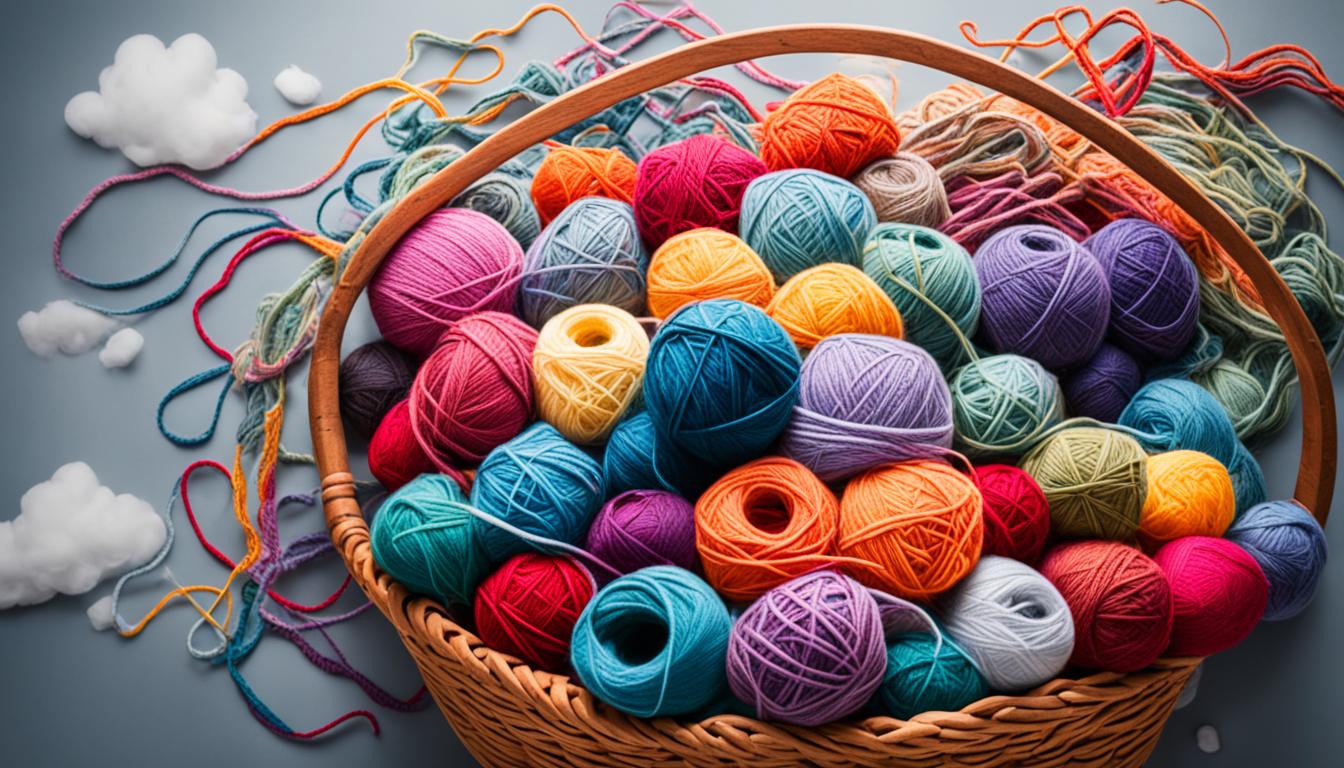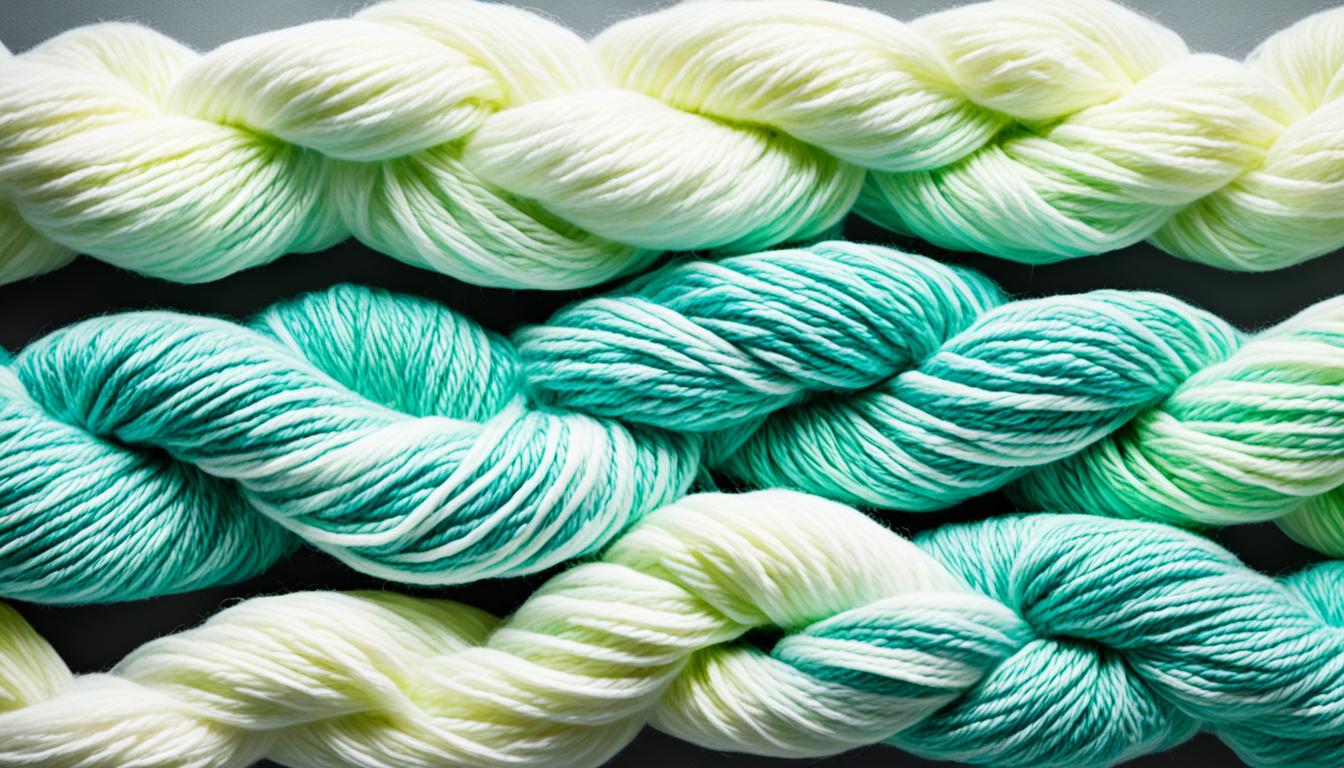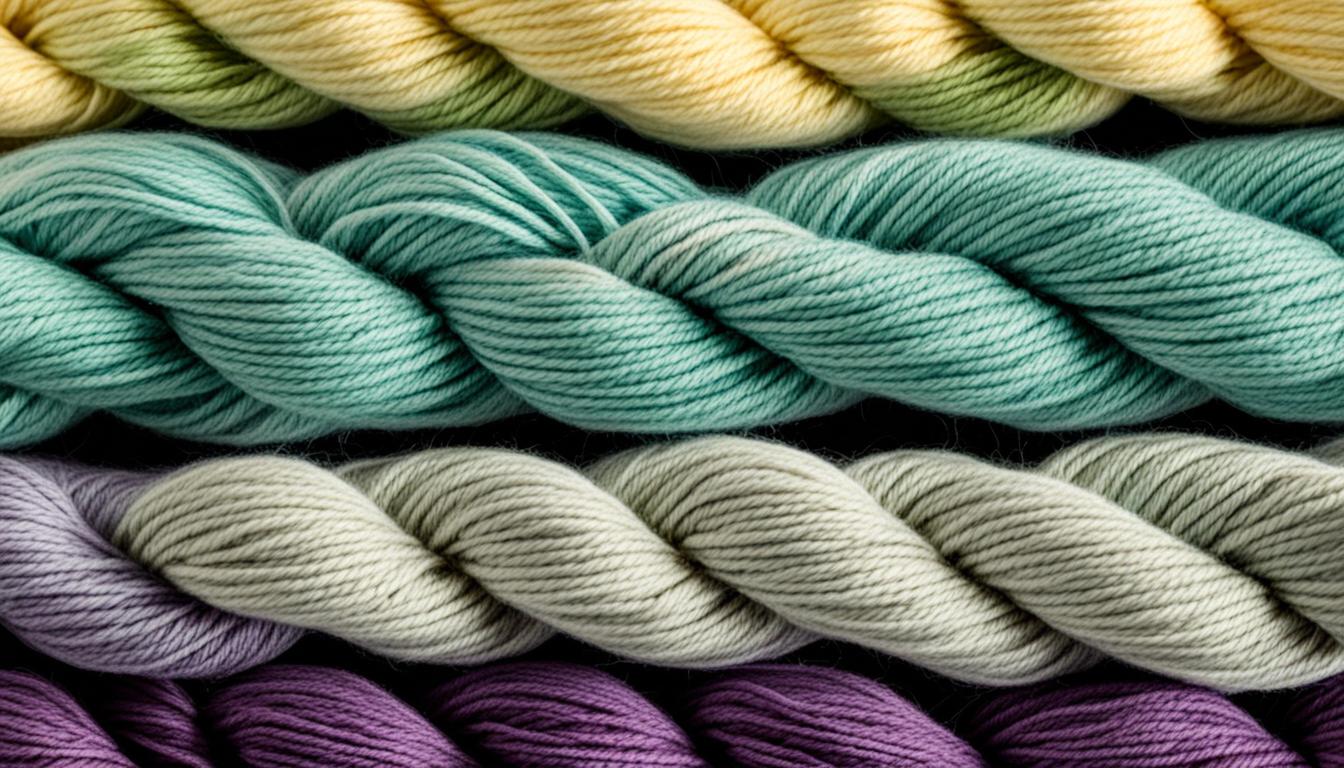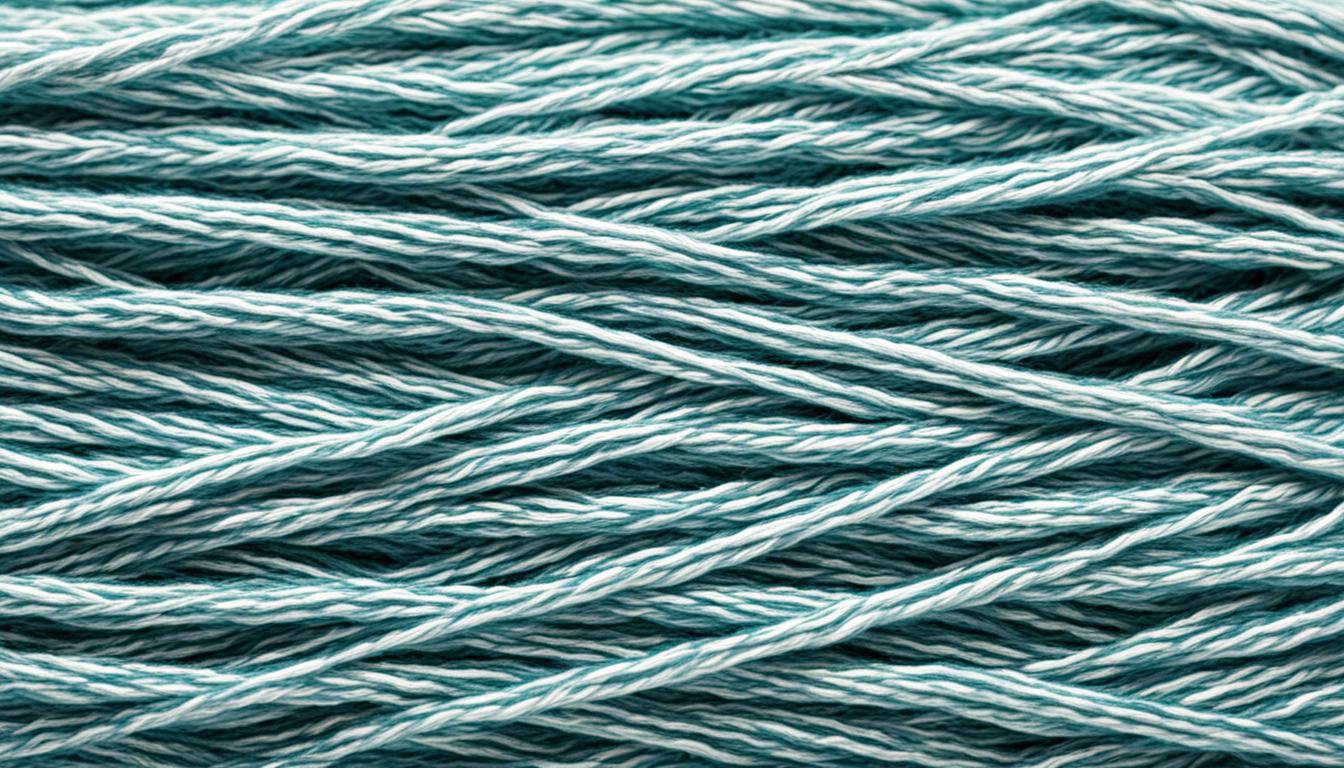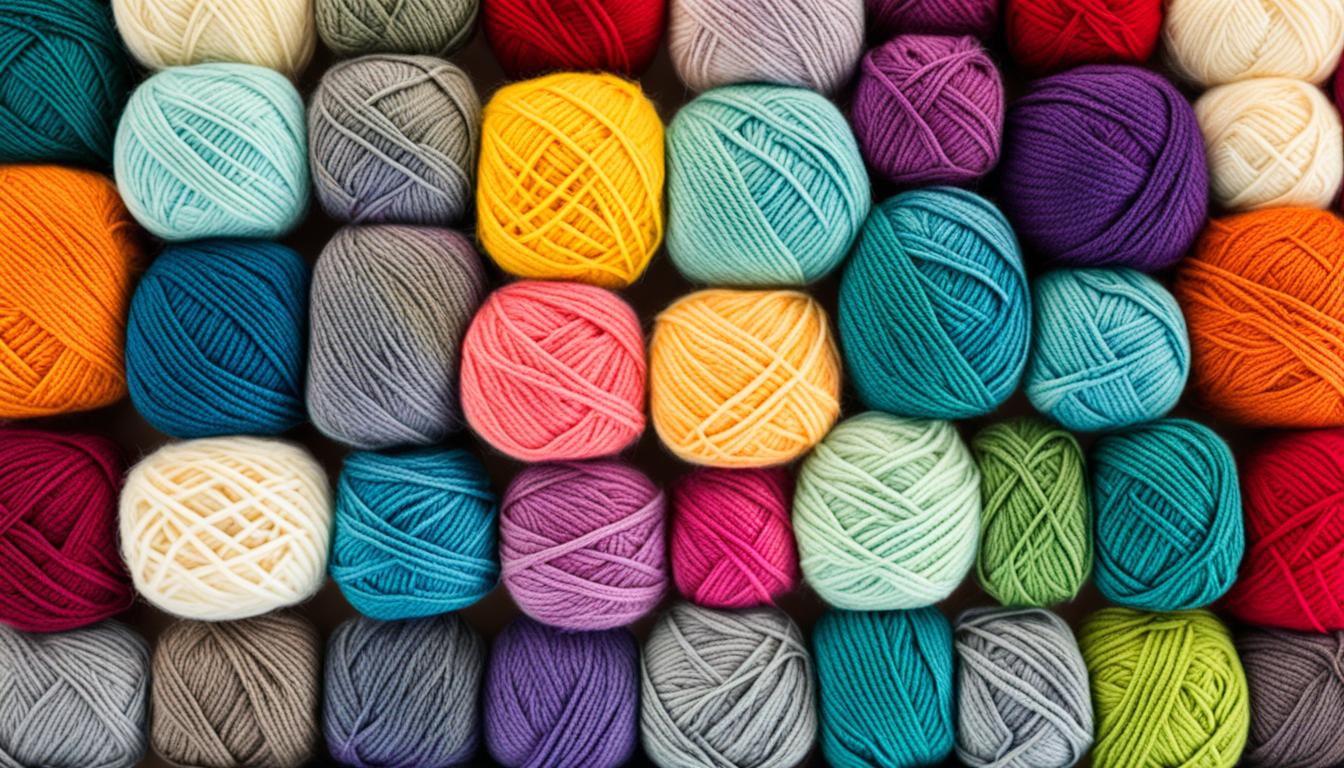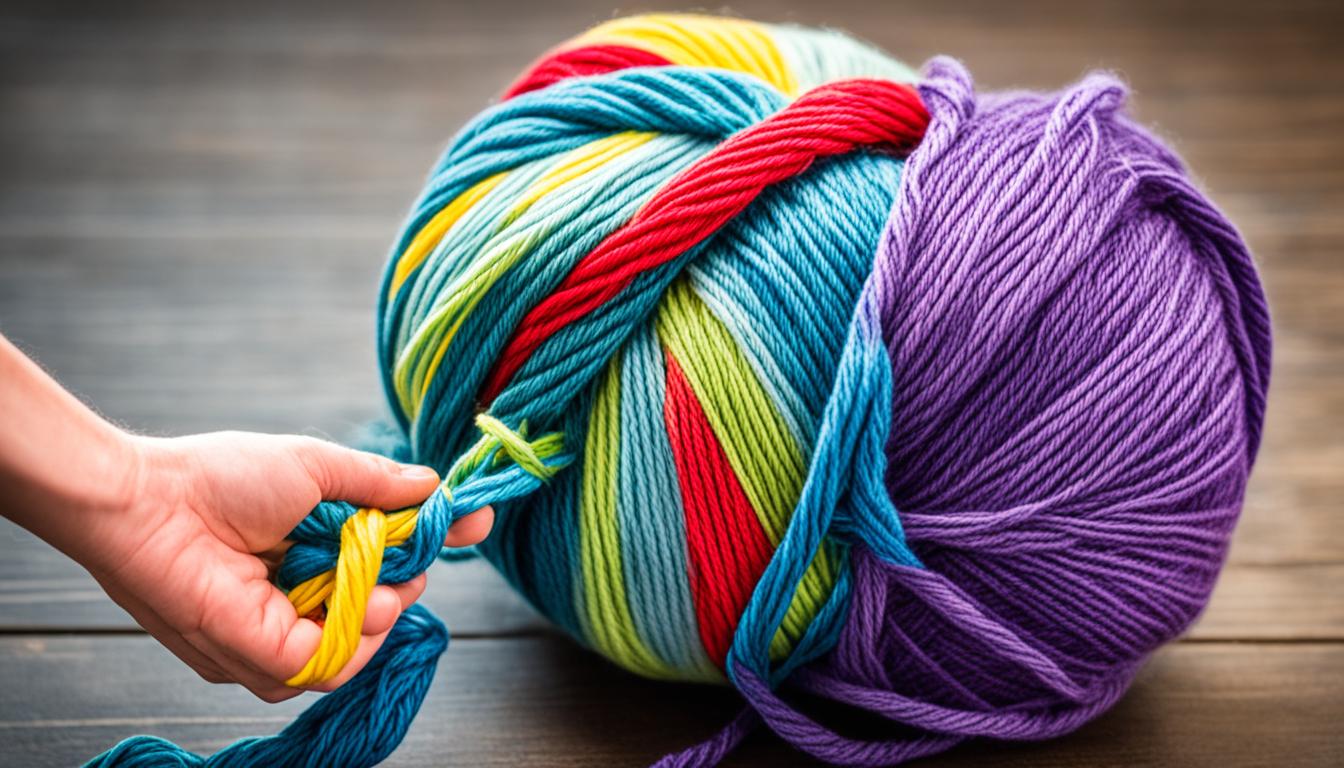Have you ever pondered the potential negative effects of using poor quality yarn? Is it possible for yarn to be low-quality? While we often think of yarn as harmless, could there be hidden dangers? This article delves into the realm of yarn to reveal the unexpected realities about its quality, materials, and longevity. Get ready to be surprised!
Key Takeaways:
- Not all yarn is created equal, and there are significant differences in quality.
- The warmth of yarn is influenced by various factors, including fiber type and thickness.
- The fashion industry, including yarn production, has a significant environmental impact.
- Consumers can make a difference by choosing sustainable fabric options.
- Understanding the impact of yarn production helps us make more informed choices.
The Warmth Ranking of Yarns
In our quest to understand the warmth of different yarns, we conducted a comprehensive yarn testing to determine their insulation properties. The results provided us with valuable insights into the warmth rankings of various fibers. Let’s take a closer look at the findings.
The Surprising Truth about Warmth Rankings
According to our testing, Alaskan Malamute yarn emerged as the warmest among the yarns we tested. It excelled in its insulation properties, providing exceptional warmth. Following closely behind Alaskan Malamute yarn, we found Merino and Alpaca yarns to be the next warmest options.
“This ranking challenges the common misconception that Qiviut is the warmest fiber,” said our lead researcher. Qiviut, often touted as the pinnacle of warmth, performed poorly in our testing.
We also tested Silk, Angora, Rose, and even a control sample, a Paper Towel, to provide a point of comparison. While all these yarns showed some level of insulation, they were not as warm as Alaskan Malamute, Merino, and Alpaca yarns.
“Our findings debunk the notion that Qiviut is the ultimate choice for warmth. While it may have other desirable qualities, our testing indicates that there are warmer options available.”
The Warmth Ranking of Yarns
| Yarn | Warmth Rank |
|---|---|
| Alaskan Malamute | 1 |
| Merino | 2 |
| Alpaca | 3 |
| Silk | 4 |
| Angora | 5 |
| Rose | 6 |
| Qiviut | 7 |
| Paper Towel (Control) | 8 |
As our testing reveals, the warmth rankings of yarns can surprise even the most seasoned fiber enthusiasts. These results can aid knitters in making informed decisions when selecting yarns for projects that require optimal warmth.
Factors Affecting Yarn Warmth Perception
The perception of yarn warmth can be influenced by various factors. One of the key factors is the softness of a fiber. When a fiber is soft and cozy, such as Qiviut and Alaskan Malamute yarns, it enhances the perceived warmth of knitted garments. The touch and feel of a soft fiber give a comforting and snug sensation that contributes to the overall warmth experience.
Another factor that impacts the perceived warmth of knitted garments is the thickness of knitted items. Thicker garments usually provide more insulation and trap heat, creating a cozy and warm environment. Knitted items such as thick sweaters, scarves, and hats often give a superior sense of warmth compared to thinner and more lightweight pieces.
Additionally, moisture management in knitting also plays a role in determining the perceived warmth of a knitted garment. Some fibers, like wool, have excellent moisture-wicking properties, which means they can absorb and release moisture efficiently. This ability to manage moisture helps regulate body temperature and keep you warm even when the fabric becomes slightly damp.
The Softness Factor
The softness of a fiber has a profound impact on the warmth perception of knitted garments. When a fiber feels softer against the skin, it invokes a sense of comfort and coziness, making the wearer perceive the garment as warmer.
“The softness of the yarn made my sweater feel incredibly warm and soothing. It’s like wrapping myself in a cloud of warmth on chilly days.”
Moreover, the tactile experience of softness can create a psychological association with warmth, leading to a stronger perceived warmth of the knitted garment.
The Thickness Factor
The thickness of knitted items greatly influences their warmth. Thicker garments create more insulating layers that trap body heat, providing enhanced warmth during colder weather.
“I can definitely feel the difference between a thin and a thick knitted hat. The thicker one keeps my head much warmer, even in freezing temperatures.”
Thick sweaters, cardigans, and accessories provide a cocoon-like sensation, offering better insulation and shielding the body from cold temperatures.
Moisture Management
The ability of yarn to manage moisture is an essential factor in the perceived warmth of knitted garments. Fibers like wool are known for their excellent moisture-wicking properties, allowing them to absorb and release moisture effectively.
“Even when I’m sweating, my wool socks still keep my feet warm. It’s incredible how moisture doesn’t affect their insulating properties.”
Moisture management in knitting is particularly beneficial in cold and damp conditions. The fibers’ capacity to expel moisture keeps the wearer dry and retains the insulating warmth, providing comfort even in challenging weather conditions.
| Factor | Impact on Warmth Perception |
|---|---|
| Softness of a Fiber | Enhances perceived warmth, creating a cozy sensation |
| Thickness of Knitted Items | Creates more insulation and better heat retention |
| Moisture Management | Keeps the wearer dry and ensures warmth even in damp conditions |
By considering these factors, you can choose yarns and knitted garments that provide optimal warmth and comfort, tailored to your preferences and the prevailing climate.
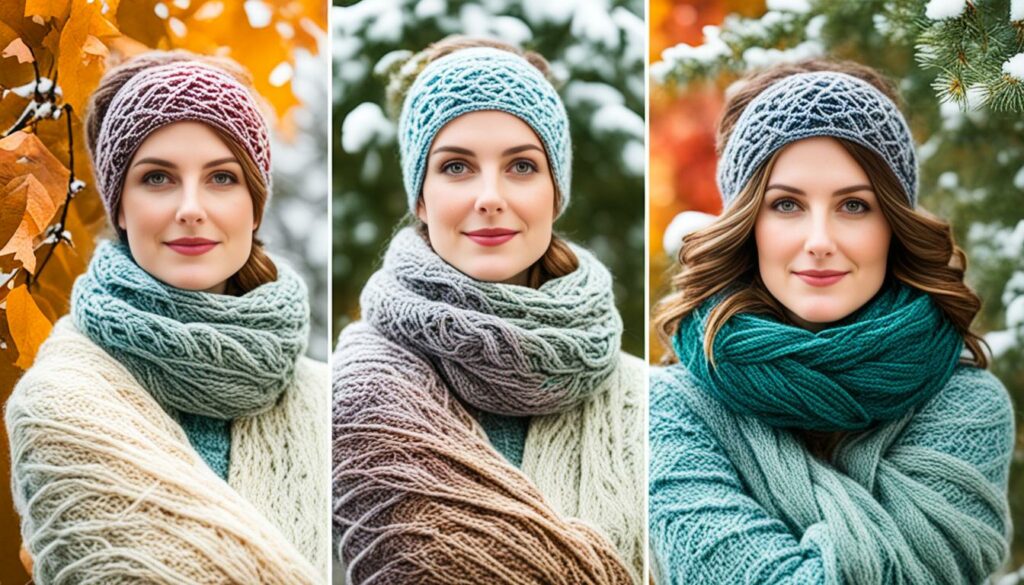
Environmental Impact of Yarn Production
Yarn production and the fashion industry as a whole have a significant impact on the environment. The rise of fast fashion has resulted in a strain on the planet, with textile waste piling up in landfills. Shockingly, approximately £140 million worth of clothing is discarded each year, adding to the growing waste problem.
The fashion industry is also a major contributor to carbon emissions, ranking second only to the oil industry in terms of pollution. By 2050, it is projected that the fashion industry will use 25% of the world’s carbon budget. This staggering number highlights the urgent need for sustainable practices and choices within the industry.
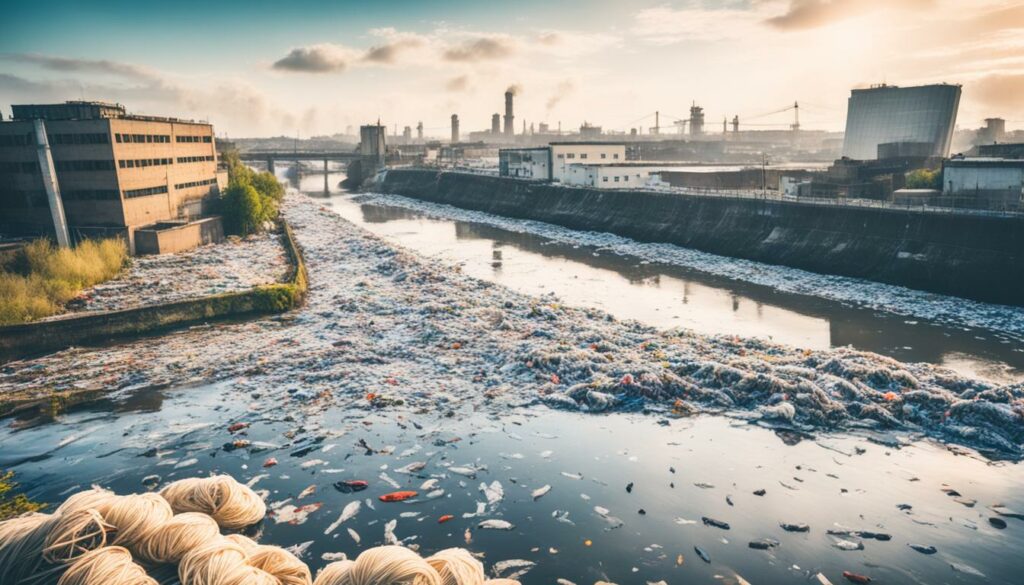
One of the key ways consumers can make a positive impact is by making sustainable fabric choices. By opting for fabrics that are environmentally friendly, we can help reduce the fashion industry’s carbon footprint and minimize textile waste in landfills. Sustainable fabric choices can include materials that are sourced and produced in a way that minimizes harm to the environment.
It is crucial to consider the life cycle of a fabric when evaluating its sustainability. This includes factors such as the raw materials used, the production process, and the end-life disposal. By choosing fabrics that are renewable, biodegradable, and produced using eco-friendly methods, we can make a real difference in reducing the environmental impact of yarn production and the fashion industry as a whole.
| Fabric Choice | Environmental Impact |
|---|---|
| Organic cotton | Reduces the use of pesticides and chemicals, conserves water, and promotes biodiversity. |
| Recycled fabrics | Reduces the demand for new materials, saves energy, and reduces waste. |
| Hemp | Requires minimal water and pesticides, absorbs carbon dioxide, and improves soil health. |
| Tencel | Produced from sustainably sourced wood pulp, using a closed-loop production process that minimizes waste and chemicals. |
| Linen | Made from the flax plant, which requires minimal water and pesticides to grow. |
By making conscious choices and supporting brands that prioritize sustainable fabric options, we can contribute to a more environmentally responsible fashion industry. Together, we have the power to reduce the environmental impact of yarn production and create a more sustainable future.
Sustainable Fabric Choices
When it comes to making sustainable fabric choices, we must consider the Five Goods Cradle-to-Cradle concept. This innovative approach ensures that sustainability is integrated throughout the entire supply chain of a product, from raw materials to manufacturing processes. By adhering to the principles of good materials, good economy, good energy, good water, and good lives, we can make conscious decisions that promote a healthier planet and a more sustainable fashion industry.
Good Materials
We should strive to choose fabrics that are not only safe and healthy but also designed for reuse and recycling. Opting for organic and natural materials, such as organic cotton or hemp, helps reduce the use of harmful chemicals and supports sustainable farming practices. It’s important to read labels and certifications to ensure that the materials we choose meet the highest environmental and ethical standards.
Good Economy
A good economy means promoting sustainable practices that benefit everyone. By supporting fashion brands that prioritize fair trade and ethical sourcing, we can contribute to a more equitable and inclusive industry. Choosing materials that are grown sustainably, such as certified organic cotton, helps protect the environment and support the livelihoods of farmers and workers.
Good Energy
Renewable and clean energy sources play a crucial role in reducing greenhouse gas emissions and combating climate change. When selecting fabrics, we should look for brands that prioritize energy-efficient manufacturing processes and renewable energy solutions. By choosing fabrics made with renewable energy, such as Tencel or recycled polyester, we can reduce our carbon footprint and support a cleaner future.
Good Water
Clean and accessible water is essential for both our planet and our well-being. Sustainable fabric choices should take into account water conservation and responsible water usage. Opting for fabrics that require less water to produce, such as linen or recycled materials, can help minimize water consumption and protect this precious resource.
Good Lives
Just and safe working conditions are paramount in the fashion industry. Supporting brands that prioritize fair labor practices and provide safe working environments is essential. By choosing fabrics from sustainable fashion brands, such as Mother of Pearl, we can contribute to the well-being of garment workers and ensure that our clothes are produced ethically and responsibly.
By making sustainable fabric choices, we can actively contribute to the preservation of our planet and promote positive change within the fashion industry. Let’s embrace the Five Goods Cradle-to-Cradle concept and prioritize good materials, good economy, good energy, good water, and good lives in our fashion consumption habits.
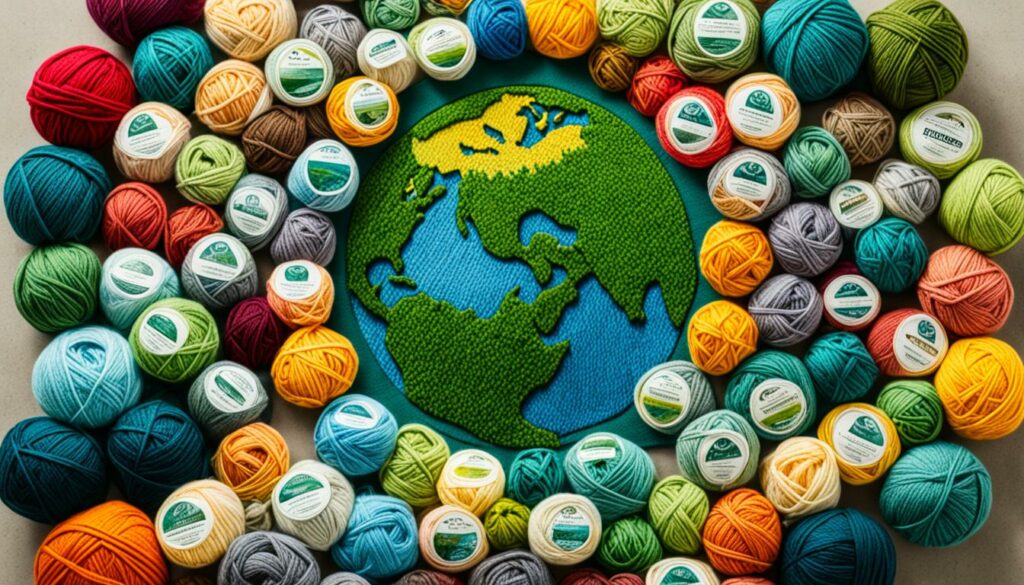
Worst Fabrics for the Environment
Cotton, despite being a natural fiber, has a significant environmental impact. Its cultivation and processing require large amounts of water, making it water-intensive. Additionally, cotton farming involves the use of pesticides and toxic chemicals, which can have detrimental effects on the earth and water supplies.
On the other hand, synthetic fabrics like polyester, nylon, and acrylic have their own set of environmental issues. These fabrics are derived from the petrochemical industry, contributing to pollution and carbon emissions. The production of synthetic fabrics heavily relies on petrochemical dependency, which has a negative impact on the environment.
“The production of synthetic fabrics heavily relies on petrochemical dependency, which has a negative impact on the environment.”
Leather, another commonly used material, is not exempt from environmental concerns. The production of leather involves the emission of methane, a potent greenhouse gas, adding to the problem of climate change. Additionally, the process of leather production involves the use of toxic chemicals, posing risks to workers and polluting waterways.
Considering the environmental impact of these fabrics, it is important for us to make conscious choices when it comes to our clothing and textile consumption. By opting for sustainable alternatives and supporting brands that prioritize eco-friendly practices, we can contribute to a healthier planet and reduce our carbon footprint.
Comparative Environmental Impact of Cotton, Synthetic Fabrics, and Leather
| Fabric | Environmental Impact |
|---|---|
| Cotton | – Water-intensive cultivation and processing – Pesticide and toxic chemical use |
| Synthetic Fabrics (polyester, nylon, acrylic) | – Petrochemical dependency – Pollution and carbon emissions |
| Leather | – Methane emissions – Toxic chemical use |
Table: Comparative Environmental Impact of Cotton, Synthetic Fabrics, and Leather
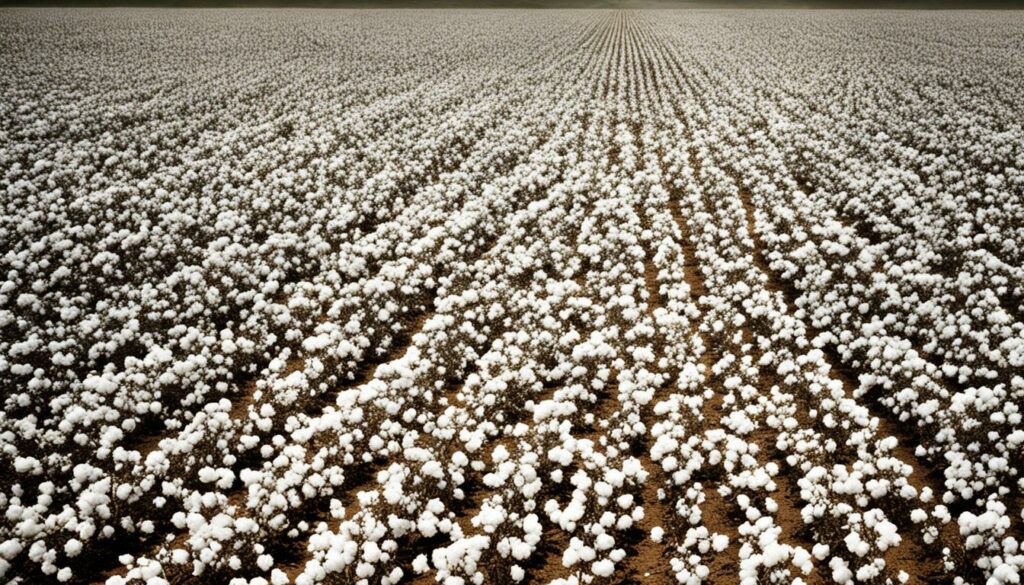
Best Fabrics for the Environment
When it comes to minimizing our environmental impact, choosing the right fabrics can make a significant difference. By opting for sustainable and eco-friendly options, we can contribute to a greener future. Let’s explore some of the best fabric choices for the environment.
Recycled Fabrics
One of the most effective ways to reduce plastic waste is by utilizing recycled fabrics. Recycled polyester, for example, is made from post-consumer plastic bottles, diverting them from landfills and giving them a new life as fabric. By choosing recycled fabrics, we actively participate in plastic waste reduction and promote a circular economy.
Natural and Biodegradable Fabrics
Embracing natural and biodegradable fabrics is another way to minimize our environmental impact. Wool, a natural fiber, is not only warm and durable but can also be safely biodegraded when disposed of. Protein-based fibers, such as silk and alpaca, share this biodegradability trait. These fabrics provide an excellent alternative to synthetic materials that often end up contaminating our ecosystems.
The Impact of Wool and Fur Production
While wool and fur are natural fibers, it is crucial to consider their specific production processes. Wool production, particularly from large-scale sheep farming, can contribute to methane emissions, a potent greenhouse gas. Similarly, fur production can have detrimental effects on our environment and animal welfare. We should be mindful of these impacts and explore more sustainable alternatives.
The Dark Side of Rayon
Rayon, often presented as a natural alternative, actually comes with some environmental concerns. The production of rayon involves the deforestation of ancient trees to obtain wood pulp, contributing to habitat loss and biodiversity depletion. Additionally, the chemical processes used in rayon production can harm both the environment and human health. It’s essential to be aware of these impacts and seek greener options.
Certified Organic Cotton
Opting for certified organic cotton allows us to support environmentally responsible and ethical practices. Unlike conventional cotton, organic cotton is grown without the use of harmful pesticides and chemicals, reducing the risk of water pollution and soil degradation. By choosing certified organic cotton, we prioritize sustainable farming methods and promote a healthier ecosystem.
Image of Recycled Fabrics

| Fabric | Environmental Impact |
|---|---|
| Recycled Polyester | Reduces plastic waste and promotes a circular economy |
| Wool | Natural and biodegradable, but wool production may contribute to methane emissions |
| Silk | Biodegradable and a sustainable alternative to synthetic fabrics |
| Alpaca | Natural, biodegradable, and offers sustainable warmth |
| Rayon | Contributes to deforestation and uses chemicals harmful to the environment |
| Certified Organic Cotton | Grown without pesticides and promotes sustainable farming practices |
Harmful Synthetic Fabrics to Avoid
Synthetic fabrics have become increasingly popular in the fashion industry due to their affordability and durability. However, it’s essential to be aware of the potential harmful effects associated with these materials, particularly nylon.
Nylon, a petroleum-based fabric, is widely used in clothing, accessories, and even household items. While it offers certain benefits like strength and stretchiness, it also poses risks to both health and the environment.
One of the main concerns regarding nylon is its impact on human health. Wearing nylon garments can lead to skin allergies, causing discomfort, itching, and rashes. Some individuals may even experience more severe symptoms, such as headaches and dizziness. These adverse reactions can be attributed to the chemical treatments involved in nylon production.
“Wearing nylon garments can lead to skin allergies, causing discomfort, itching, and rashes.”
Furthermore, synthetic fabrics like nylon contribute to the negative environmental impact of the fashion industry. Not only do they require petrochemicals as raw materials, but their production involves the use of toxic chemicals. These toxins can pollute water sources, harm aquatic life, and affect ecosystems.
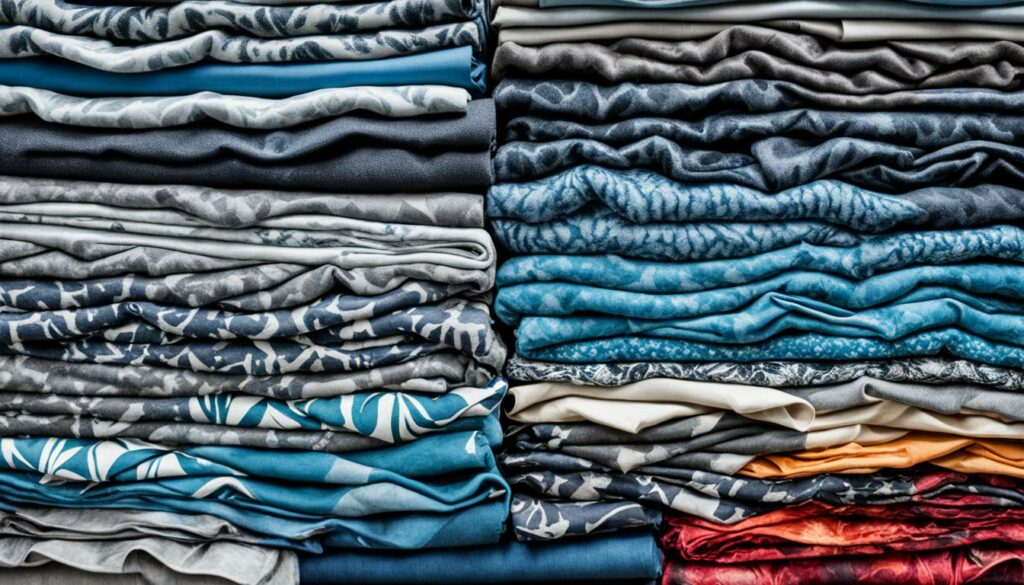
To protect both our health and the environment, it’s advisable to avoid petrochemical-based fabrics, including synthetic ones like nylon. Instead, opt for natural and eco-friendly alternatives that offer similar characteristics without the harmful effects. Consider materials like cotton, hemp, and Tencel, which are sustainable choices that prioritize both our well-being and the planet’s.
Alternatives to Harmful Fabrics
As responsible consumers, we have the power to make a positive impact on the environment through our fabric choices. By selecting natural and eco-friendly options, we can minimize the harm caused by traditional fabrics. Here are some sustainable alternatives worth considering:
Hemp
Hemp is a versatile and eco-friendly fabric choice. It requires minimal water and pesticides to grow, making it an excellent option for environmentally conscious individuals. Hemp fabrics are known for their durability and breathability, making them ideal for a wide range of clothing items.
Certified Organic Cotton
Certified organic cotton is grown without the use of harmful pesticides or synthetic fertilizers. It promotes healthy soil and water systems, making it a sustainable and safe choice. Organic cotton fabrics are soft and comfortable, making them perfect for everyday wear.
Wool
Wool is a natural and renewable fiber that is highly sustainable. It comes from sheep, which require minimal human intervention for their care. Wool fabrics are known for their insulation properties, keeping you warm in colder weather. Additionally, wool is biodegradable, ensuring minimal environmental impact.
Tencel
Tencel, a brand name for lyocell, is made from sustainably sourced wood pulp. The production process is environmentally friendly, using a closed-loop system that minimizes waste and water usage. Tencel fabrics are soft, breathable, and biodegradable.
Linen
Linen is a natural fabric made from the fibers of the flax plant. It is known for its breathability and moisture-wicking properties, keeping you cool and comfortable in warm weather. Linen is also biodegradable and has a low environmental impact.
Pinatex
Pinatex is a fabric made from pineapple leaf fibers, a byproduct of the pineapple industry. It is a sustainable and cruelty-free alternative to leather, without using any additional land or water resources. Pinatex fabrics are versatile and can be used for various applications, including footwear and accessories.
To ensure you are making truly eco-friendly choices, look for certifications and labels indicating the fabrics are certified organic or sustainably sourced. By opting for these natural and eco-friendly fabric choices, we can contribute to a more sustainable and responsible fashion industry.
Conclusion
In conclusion, the impact of yarn production and the fashion industry on the environment is significant. We have seen that fast fashion brands contribute to textile waste in landfills, and the fashion industry as a whole has a large carbon footprint. However, we have the power to make a difference by making sustainable fabric choices.
By considering factors such as the warmth ranking of yarns, the environmental impact of different fabrics, and the Five Goods Cradle-to-Cradle concept, we can make more informed decisions. Opting for environmentally friendly fabrics, such as recycled materials or organic cotton, can help minimize our impact on the environment.
It is crucial to remember that our textile choices have far-reaching consequences. By choosing sustainable fabric options, we can support a more sustainable fashion industry and promote a healthier planet for future generations. Let’s take a step towards a greener future by making conscious and environmentally considerate textile choices today.
